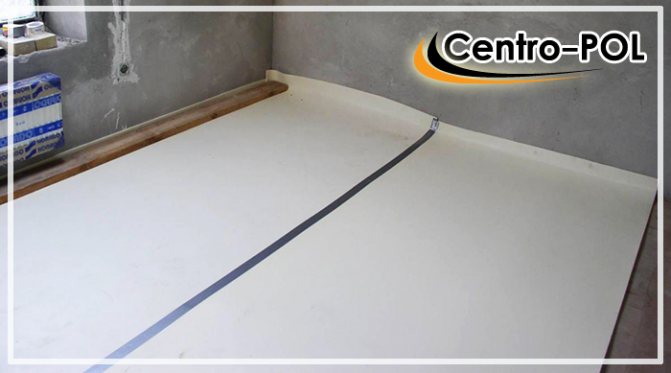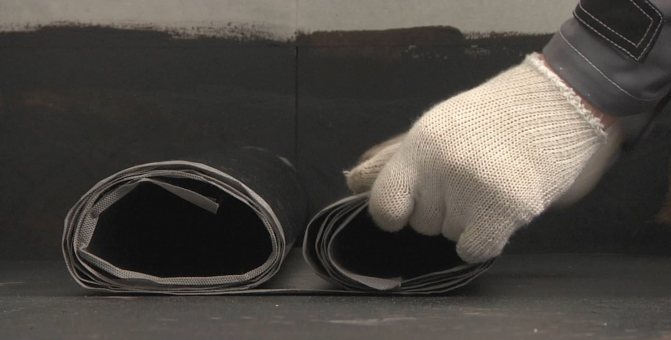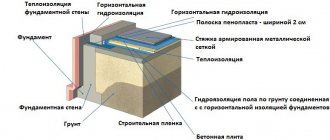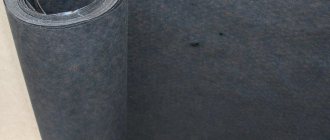Classification of rolled roofing TechnoNIKOL
Soft roof TechnoNIKOL for an Economy class roof is designed for waterproofing a variety of building buildings and utility rooms. Despite its low cost, such a roof perfectly protects in conditions of temperature extremes and lasts up to 20 years. Euroruberoid and Bikrost are representatives of the economy class of a soft build-up coating. These materials are characterized by ease of installation. Euroruberoid has less carcinogenicity and low toxicity in comparison with ordinary roofing material.
Bikroelast and Biopol belong to the Standard class. The TechnoNIKOL coating of this class perfectly copes with the protective function, it is convenient to install, it has increased resistance to external factors and mechanical influences, and has a long service life. It should be noted that this type of product has an acceptable price-quality ratio. Biopol is most often used for waterproofing foundations, additional carpet on roofs. Marking will help determine for which particular work it is worth using this or that material. Biopol P is used for lower roofing carpet and water protection of foundations. Biopol K - for the outer layer of the roof. Bikroelast has similar characteristics and markings.
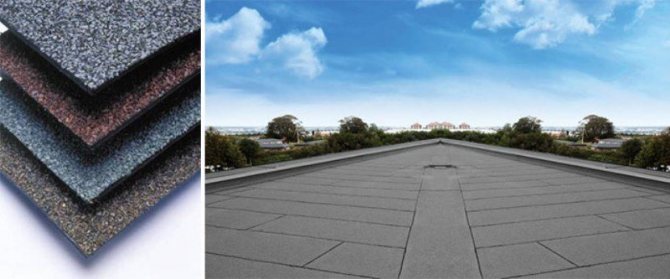
Roof covering with soft roof Bikroelast Source stroypay.ru
On our website you can find contacts of construction companies that offer the service of roofing works of any complexity. You can communicate directly with representatives by visiting the Low-Rise Country exhibition of houses.
The representative of the roll-up soft roofing of the Business class is Uniflex. It is widely used in construction in various climatic zones. The marking will help determine the type of dressing and the scope of this material. Uniflex K - used for the top layer of the coating. It has a coarse grain coating. And Uniflex P - with fine dusting is used for waterproofing structures. This coating is based on polyester, fiberglass or fiberglass.
Premium roll roofing has earned an excellent reputation in all countries. Technoelast is a representative of this class of coatings. Technoelast has improved waterproofing properties, the greatest strength and durability. It is used in different climatic zones for roofing buildings and for protecting structures and foundations in places with increased groundwater pressure and high subzero temperatures.
Another representative of the advantage class is TechnoelastMost - a coating that is used for waterproofing the structure of bridges and floor slabs. The base made of artificial rubber will reliably perform its functions in conditions of increased loads.


During installation, the lower part of the roof heats up, which allows it to stick to the surface Source buildis.techinfus.com/en/
Choosing a way to protect the roof from moisture ↑
Previously, the waterproofing of the roof was provided by such well-known, but outdated, materials such as roofing material, hydrostekloizol and glassine. Now the share of their use in modern construction has dropped sharply, since polymer-bitumen coatings, laid by fusion, have come to replace them. High performance is provided by a base made of fiberglass or polyester, which is not subject to decay and destruction.
The use of waterproofing materials of a new generation, which include the deposited waterproofing TechnoNikol, in the construction of roofs guarantees the strength and reliability of the roofing carpet, as well as a long service life of all structural elements of the structure. Roll materials are indispensable for flat roofs. They are also used on pitched roofs, the slope angle of which does not exceed 60 degrees. The number of layers of waterproofing depends on the steepness of the slope.
The unique properties of TechnoNICOL waterproofing roll materials allow them to be used in any region of Russia, regardless of the severity of climatic conditions. Retaining flexibility at low temperatures and high heat resistance are the defining qualities when choosing materials for waterproofing industrial and residential buildings under construction in the Siberian and Far Eastern regions.
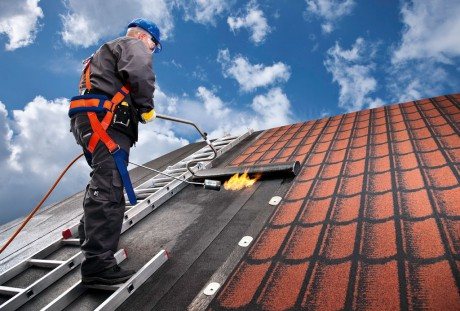

Construction and repair of roofs using TechnoNikol fused roofing materials, provides reliable waterproofing of the roof surface
Soft roofing technology
For the long-term operation of the roofing material, it is extremely important to observe the TechnoNIKOL soft roofing technology. Almost all roll coatings on the market today are weldable. For a high-quality and long-term service, it is worth considering a number of features and styling rules. For all Technonikol products, preparatory work should be carried out before installation.


"Pie" for a warm and non-leaking flat roof Source stroypay.ru
TechnoNIKOL coating is most often used for the top layer of flat roofs. Thanks to this, the installation of such a coating is minimized. There is no need to build a rafter system, and the issue of wind protection is not relevant - since the windage of such a roof is minimal.
Installation of a flat roof begins with laying the base. Best of all, under the base of such a roof will be metal or concrete. The next layer is expanded clay or crushed stone. Next, a vapor barrier and insulation are lined. If the insulation material is not rigid enough, then a screed layer is applied on top. The finishing layer of the roof is TechnoNIKOL coating.
Particular attention should be paid to the flow of water. In small buildings, external gutters are used for this purpose. At the lowest point of the roof, drain funnels must be installed.
This might be interesting!
In the article at the following link, read about the passage of the chimney through the roof.
Stages of laying a soft roof
- The surface of the base should be carefully clear
from dirt and sand. If it is necessary to repair the roof, then the old material must be removed.
- The base of the roof must be flat
... If there are cracks or chips, they should be repaired. To do this, you need a cement-sand mixture.
- At the junction of the base to the vertical structure, it is necessary to create sides
- fillets at an angle of 45 °. For this, a cement-sand mixture will be used. The material is laid so that it completely overlaps the side and adheres well to each other.
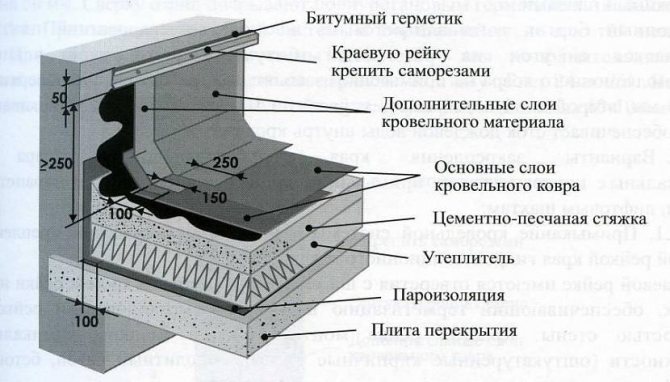

Corner overlap of the roof of the soft roof Source stroypay.ru
- All protruding elements plaster
... Parapets are plastered to the height of the covering material.
- Before laying the material, the surface is carefully wipe and dry
... It is advisable to check the humidity with a moisture meter.
- Necessarily the basis is needed prime
... A bituminous primer is suitable for this.
- The roofing material is laid in one direction
... When the angle of inclination of the roof is less than 15 °, the material is rolled out perpendicular to the water flow, starting from the lowest point of the roof. In the event that the slope of the roof is more than 15 °, the roll is rolled from the top point to the bottom. And a flat roof is covered from its edge.
- At the beginning of work, TechnoNIKOL coating needs try on
on the roof surface, make sure that it goes over the protruding roof sections.
- When trying on the material and in order for it not to move, the edge of the cover must be fix
... A few days before the installation work, the rolls are put on the edge so that they take the correct shape.
- The overlaying roof is laid by “to myself
". So it is more convenient for the master to monitor the level of heating of the bituminous layer. It is immediately clear whether the material has warmed up well enough.It is extremely important to make all movements smooth and uniform, without jerks. Places where the material is laid with an overlap must be additionally heated.


Laying of a soft roof is done "on oneself", in this case it is clear how much the material has warmed up Source realsroier.ru
This might be interesting!
In the article at the following link, read about the repair of a soft roof.
- If the canvas slides to the side during installation, you can try it move
but do not peel off. If it is not possible to fix it, then the panel is cut off and glued further with an overlap.
- Glue the material with a torch by fusion
... Thanks to this, the material is tightly glued to the base and to each other, which provides excellent waterproofing properties. The sheets are overlapped. Each next strip should overlap the previous one by at least 100 mm. The end joints between the panels are laid at a distance of 500 mm. When laying the roll perpendicular to the ridge, the canvas is transferred by 200 mm to another slope.
- The burner is held so that it warms up all coating layers evenly
... If you do not follow the rules for heating the material, then a bituminous roller appears during installation.
- It is imperative to warm up the material evenly
to prevent the occurrence of overheated and cold areas. If swelling appears during styling, they are cut through.
Mastics for the device of coating waterproofing ↑
TechnoNikol mastic No. 24 (MGTN) is made from a mixture of petroleum bitumen with additives and mineral fillers. Additional components enhance the characteristics, properties and durability of the bitumen. Mastic MGTN, completely ready for application, contains a solvent. This mastic provides durable and reliable waterproofing, and also gives anti-corrosion resistance to materials treated with it.
The scope of MGTN mastic is quite extensive. It is used for waterproofing foundations, piles, and other metal and wood surfaces. Floor waterproofing is provided with TechnoNIKOL mastic. Sheet materials used to level the floor, as well as parquet and parquet boards, are glued onto it.


TechnoNIKOL mastic No. 24 is completely ready for use for waterproofing various building structures and metal surfaces
To understand this variety of waterproofing materials is within the power of professional builders who know the technology of applying each of them. When installing roofs, experts will advise the best waterproofing material from the TechnoNICOL series.
Rolled roof repair work
When the temperature rises significantly in summer, the roof gets very hot. And at high humidity, the carpet material peels off, air and water bags appear, and mechanical damage to the material occurs. To extend the service life of the surfaced roofing TechnoNIKOL, it is important to regularly inspect the integrity of the coating and eliminate defects in a timely manner.


If defects appear, urgent repair is required - the slightest crack can cause the gradual destruction of the entire coating.
If cracks or tears of the roofing material appear, they must be cleaned, covered with mastic and sealed with a new layer of material, but at least 200 mm wider. Pieces of decayed material are cut out with a margin, then the hole is smeared with mastic and sealed with new material right next to the old one. Put another layer on top, but already overlapping the joints by 150 mm.
Features of a soft roof covering TechnoNIKOL
Confirmation of the high quality of Technonikol roofing is the ISO 9001 certificate, which guarantees the reliability of the manufacturer of this brand. For the manufacture of a soft roof, bitumen is used.
The following types of TechnoNIKOL products are on sale:
- roll materials;
- polymer membrane;
- flexible tile.


The structure of TechnoNIKOL roof coatings is characterized by a high degree of resistance to mechanical stress and weather conditions.
In the production of shingles, fiberglass is used as a base, which is impregnated on both sides with modified bitumen. Outside, the products are protected from basalt coarsely fractionated crumbs. This coating paints the tiles in a variety of shades and colors.
On the reverse side of the product there is a bitumen-polymer coating - it is protected by a film layer. It is removed before TechnoNicol is laid.


The polymer membrane is produced in three versions:
- based on plastic polyolefins;
- using synthetic rubber;
- with the addition of plasticizers.
The most in demand is a membrane produced on the basis of PVC with plasticizers, which give the roof covering elasticity and resistance to the influence of negative temperatures. To increase the tensile strength, the base is reinforced with a polyester mesh.
Roll marking and material composition
Immediately after the name, on the rolls from TechnoNIKOL, additional marking is used, of one or three letters. They indicate the structure of the material, and it already depends on what exactly this type of roof is suitable for.
So, let's decipher them:
- The foundation: X - fiberglass, T - fiberglass and E - polyester.
- Top protective layer: P - polyethylene film, TO - coarse-grained dressing and M - fine-grained dressing.
- Bottom protective layer: P - polyethylene film, M - fine-grained dressing, AT - ventilated cover, or ventilation ducts, E - polymeric non-woven fabric and WITH - self-adhesive side.
Abbreviated markings are also used:
- P - this is a weld-on roof without protective dressing. It is intended to be used as a bottom layer.
- TO - This is a roofing material with coarse-grained grit, which has an ultraviolet grit. This is used for arranging the top layer in a multi-layer roofing carpet.

